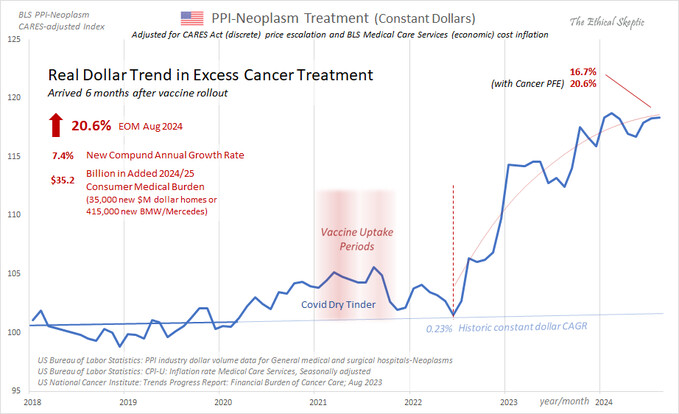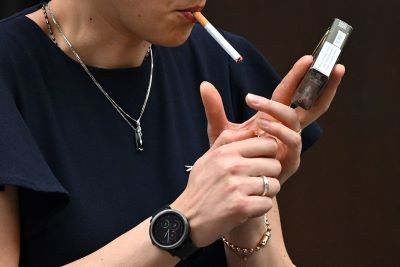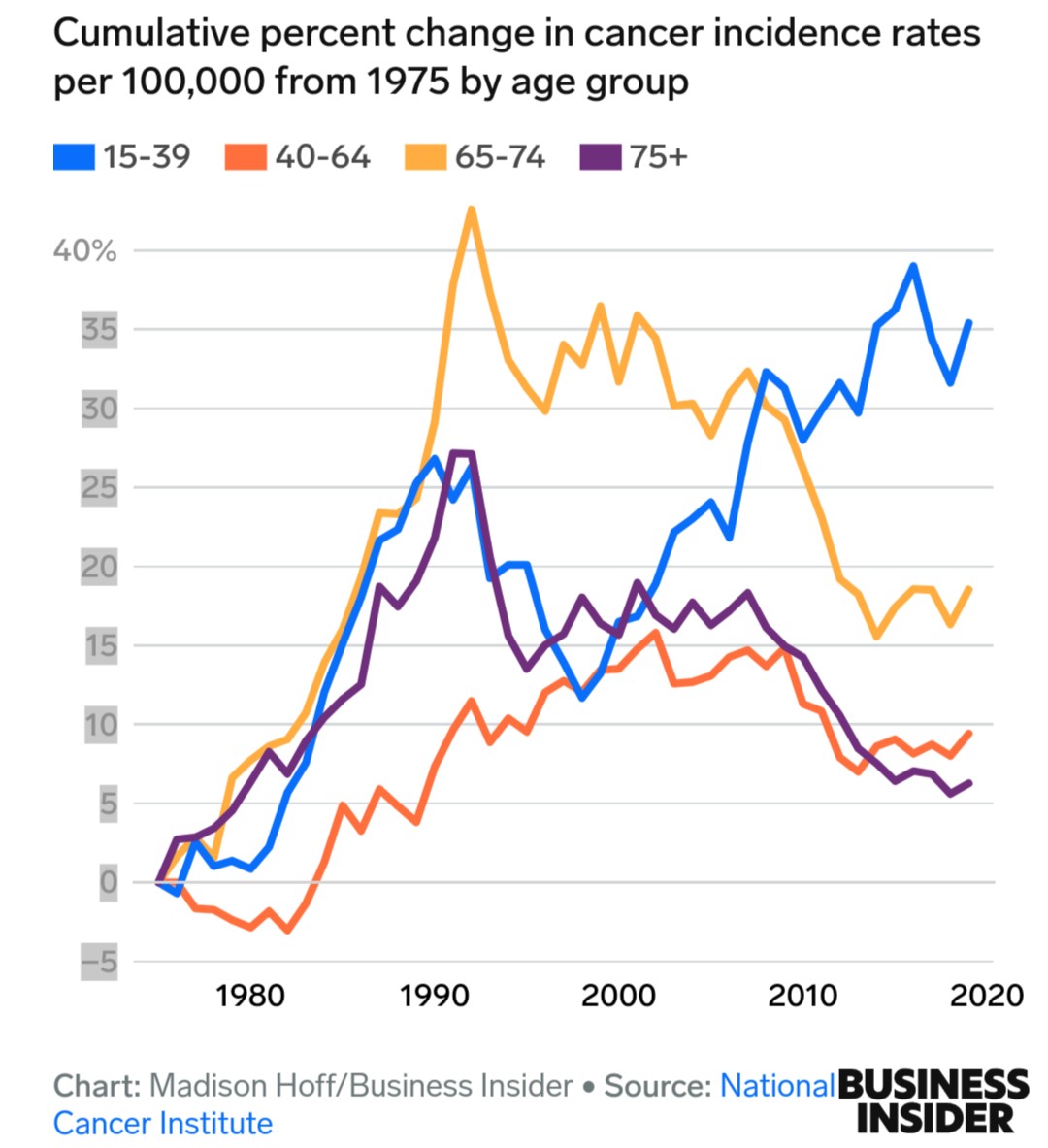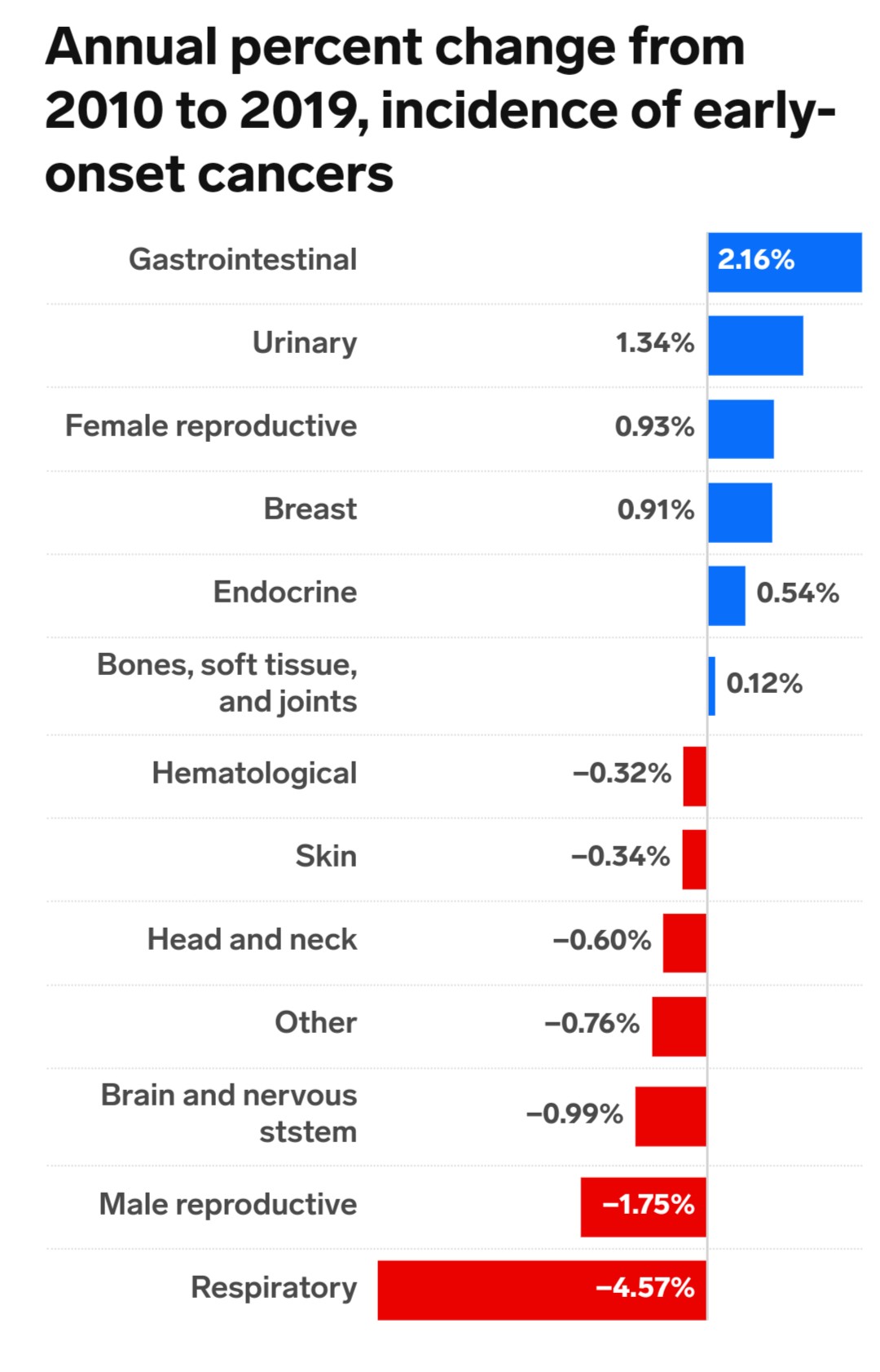Of the many young people whom Cathy Eng has treated for cancer, the person who stood out the most was a young woman with a 65-year-old’s disease. The 16-year-old had flown from China to Texas to receive treatment for a gastrointestinal cancer that typically occurs in older adults. Her parents had sold their house to fund her care, but it was already too late. “She had such advanced disease, there was not much that I could do,” says Eng, now an oncologist at Vanderbilt University Medical Center in Nashville, Tennessee.
Eng specializes in adult cancers. And although the teenager, who she saw about a decade ago, was Eng’s youngest patient, she was hardly the only one to seem too young and healthy for the kind of cancer that she had.
Thousands of miles away, in Mumbai, India, surgeon George Barreto had been noticing the same thing. The observations quickly became personal, he says. Friends and family members were also developing improbable forms of cancer. “And then I made a mistake people should never do,” says Barreto, now at Flinders University in Adelaide, Australia. “I promised them I would get to the bottom of this.”
Almost half of cancer deaths are preventable
It took years to make headway on that promise, as oncologists such as Barreto and Eng gathered hard data. Statistics from around the world are now clear: the rates of more than a dozen cancers are increasing among adults under the age of 50. This rise varies from country to country and cancer to cancer, but models based on global data predict that the number of early-onset cancer cases will increase by around 30% between 2019 and 20301. In the United States, colorectal cancer — which typically strikes men in their mid-60s or older — has become the leading cause of cancer death among men under 502. In young women, it has become the second leading cause of cancer death.
As calls mount for better screening, awareness and treatments, investigators are scrambling to explain why rates are increasing. The most likely contributors — such as rising rates of obesity and early-cancer screening — do not fully account for the increase.
The increase in cancer among young adults has oncologists on edge. Hundreds of experts from all over the world attended a recent lecture delivered by Shuji Ogino, a professor of Epidemiology at Harvard Medical School, on this “emerging global epidemic”
The increase in cancer among young adults has oncologists on edge. So much so that the European Society for Medical Oncology (ESMO) congress, held recently in Barcelona, gave a talk on the subject to a packed room. Hundreds of oncologists from all over the world attended a lecture delivered by Shuji Ogino, a professor of Epidemiology at Harvard Medical School, on this “emerging global epidemic” that has specialists deeply concerned.
According to a study published in the journal BMJ Oncology, tumors in people under the age of 50 have increased by almost 80% in the past 30 years, but scientists have not yet managed to fully get to the bottom of why. The experts consulted say that current lifestyle habits are playing a significant role but may not explain the whole story. Moreover, according to Ogino, the increase in early-onset cancer is only “the tip of the iceberg” regarding a global rise in chronic diseases over several generations.
Full story:
Ask Thomas Seyfried.
It’s interesting that they are perplexed. I’d say the obvious is what has happened to diet quality, microplastics, BPAs/PFAS, chemicals in our food/water/air.
Add to that, increasing sedentary lifestyle with metabolic syndrome - and I’m surprised there aren’t more cases.
Cell phones have proliferated over the last 30 years. The industry assures us the emissions are safe.
Many things have changed in the past 30 years. You can find strong associations between any of them and cancer but it is very likely not causal.
The Chinese Junk food diet doesn’t work.
What is it?
Like meat, a lot of salt, some noodles and rice? Smoking? High heat?
The entire world eats so insanely unhealthy food.
(Picture a Chinese doomer in an Internet cafe eating instant noodles… and you have your answer, same is true in the West).
Electricity is involved in the functioning of human cells. Most of the population is in constant physical contact with a device that is receiving and emitting electricity. That this could cause human cells to become cancerous is not an unreasonable speculation.
I’ve heard you won’t catch electricity cancer if you make people put their cell phones in your mailbox before they enter your home. You should definitely start doing do this
Thanks for the health tip.
Let’s keep the discussion friendly here. The WHO is investigating cell phone radiation as a possible carcinogen, so it’s not that farfetched.
However in 2024, the National Cancer Institute says there is no link between cell phone radiation and cancer.
The Ethical Skeptic covers this topic extensively. He’s x-NavyIntelligence and he’s way smarter than I ever thought about being. He does sophisticated statistical and operational analysis and frequently uses the term “pull forward effect”. I pointed out to him that marketing people use that term and that statisticians use the term “displaced mortality”. He took umbrage at my perceived disparagement and blacklisted me:)
Twitter @EthicalSkeptic
WebSite: theethicalskeptic.com
Twitter: x.com
see WebSite for further info:

Alright explain the graph.
The reason why I ask is I don’t believe you know what you’re looking at. It’s strange to share things you don’t understand, because how do you know it’s true?
What is a ‘BLS PPI-Neoplasm CARES-adjusted Index’ – for example?
What is a “CARES act (discrete) price escalation” adjustment?
Or a 'BLS Medical Care Services (economic) cost inflation" adjustment?
How do you know he hasn’t cherry picked statistical methods to show what he wants to show? Which one did he exclude? And in the end – correlation is not causation.
You’re right I don’t fully understand it and I have my qualms about some of what I do understand. However ES picked up on this several years ago when it first began. I don’t know anybody else that was on it so early. But it could be coincidence, He’s a bit of a doom-sayer and a broken clock is right twice a day. The screenshot was just to give an indication of the kind of stuff he does.
You can prove a correlation between vaccine uptake and cancer in a way less convoluted way which makes me think he is schizophrenic.
Even if you presented such a graph – correlation is not causation. It makes sense to me that cancer rates increases could be because of delaying treatment or other confounding factors.
Yes, those were some of my qualms also. He does address them occasionally, but I don’t fully agree with his arguments, perhaps I don’t fully understand them:) But if I only read things I fully understood I’d be stuck with old Dilbert cartoons, and even they sometimes take me awhile to figure out.
Was electricity invented 30 years ago?
I understand that BCS reference.
Since we’re posting graphs, there’s quite a few pretty ones in this article. It’s soft-paywalled, but 12ft.io takes care of that
Two I found enlightening:
Looking at the cancer rates that are increasing, and the ones that are shrinking, my money is on something entering through the digestive system.
Processed red meat, red meat, and processed meat, would be my bet. Already linked with colorectal cancer. That has been talked about for a long time and which made me avoid it long ago. Low fiber consumption.
When this came out I already had heard about it for years.


